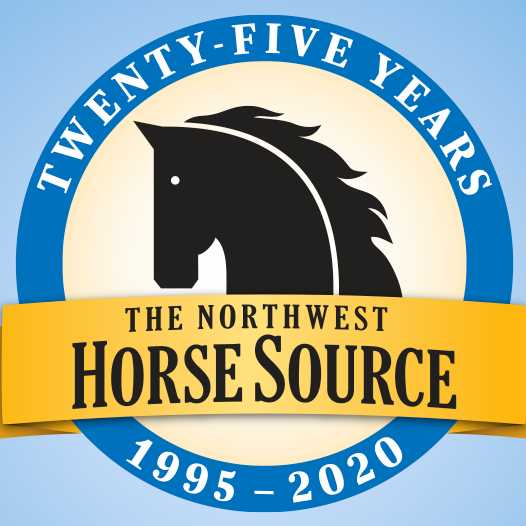As Temperatures Rise, Mosquitoes and the Diseases They Carry Thrive
Merck Animal Health reminds horse owners to take preventive measures

Steamy August temperatures aren’t the only thing posing a threat to the health of your horse. August is also prime mosquito season, which means an increased risk of our horses contracting serious and often fatal diseases like Eastern and Western Equine Encephalomyelitis (EEE, WEE), and West Nile virus (WNV), which are transmitted by mosquitoes. Unfortunately, dozens of horses have already fallen victim to these diseases in 2016.
Experts at the Natural Resources Defense Council (NRDC) underscore that weather and infectious disease have long been connected. Extreme or shifting weather patterns mean we should become more aware of vector-borne diseases — for our horses and ourselves. These weather patterns create an inviting environment for the mosquitoes that can carry these diseases.
Now is the time, if you haven’t, to vaccinate your horses. The American Association of Equine Practitioners (AAEP) considers EEE, WEE and WNV core equine vaccinations, which means they are indicated in the immunization program for all horses. For previously vaccinated horses residing or traveling to areas where disease is endemic, a booster vaccination also may be recommended.1 Remember to contact your local veterinarian to advise you on the vaccination plan most effective for your horse and geographic area.
Know the threats
There are two types of equine encephalomyelitis commonly seen in North America – EEE and WEE. A third type, Venezuelan (VEE), is seen in Central America and northern South America but has not been reported in the United States since 1971.
The more common of these, EEE (sleeping sickness), is a virus that causes severe and often fatal neurologic disease in horses, humans and other mammals. The disease is found as far north as eastern Canada and as far south as Central and South America. In the United States, EEE has been detected in all states east of the Mississippi River, as well as a number of western states.2 Young horses are most susceptible to infection.
If you see any of the following clinical signs of EEE, contact your veterinarian as soon as possible.
• High fever
• Severe depression
• Incoordination
• Paralysis
• Seizures
• Coma
“Unfortunately, EEE has a fatality rate of nearly 90 percent in most horses,” says Duane Chappell, D.V.M., Merck Animal Health equine technical services veterinarian. “Prevention focuses on mosquito control and appropriate vaccination once or twice per year depending on the climate and other disease risk factors. In areas with long mosquito seasons or for horses traveling to these areas, veterinarians may recommend horses be vaccinated twice a year against EEE.”
It’s hard to believe we’ve been living with West Nile virus (WNV) for more than a decade. It is the leading cause of arbovirus encephalitis in horses and humans in the United States. Transmitted by mosquitoes that can infect horses and humans, WNV was first diagnosed in U.S. horses in 1999. Since that time, WNV has been detected in horses in all 48 continental states, as well as most of Canada and Mexico.
The severity and duration of clinical signs can vary greatly with WNV. Talk to your veterinarian immediately if your horse is experiencing:
• Depression
• Low-grade fever
• Change in behavior
• Muscle fasciculations (twitching)
• Incoordination, ataxia
• Cranial nerve deficits (such as head tilt, ear droop, difficulty swallowing)
• Recumbency (inability to rise after laying down)
“Once a horse is infected and showing clinical signs, mortality rates can reach over 30 percent,” says Dr. Chappell. “And of the horses that do survive, only 59 to 79 percent may experience a full recovery, with many still exhibiting residual effects, such as gait and behavioral abnormalities, six-months after diagnosis.”3
There is no treatment for the virus itself, just support for the clinical signs. Annual vaccination and mosquito control (eliminate standing water on property, use mosquito repellents, and stabling horses at dawn and dusk when mosquitoes are most active) are the best methods of prevention. For high risk populations, such as horses younger than 5 years and older than 15 years of age, more frequent vaccination may be indicated.1
According to the Equine Disease Communication Center, confirmed disease reports to-date suggest that some areas of the country may be at a higher than normal risk of infection due to wet conditions that provide prime mosquito breeding environments.
“The EDCC is a great resource, particularly if you want to monitor disease in a location where you may be traveling to for a show or event,” adds Dr. Chappell.
While there is no one-size-fits-all vaccination recommendation, it is important to work with your veterinarian to assess disease risk and a vaccination protocol that meets the needs of the individual horse. This provides a good opportunity to do a general health check and make sure your horse is at his best for the fall and winter season. For more information, visit GetVaccinatingRight.com.
1 AAEP Vaccination Guidelines (www.aaep.org)
2 Gibbs EPJ, Long, MT. Equine Alphaviruses. In: Infectious Diseases of Horses. Eds Sellon DC, Long MT. St. Louis: Saunders Elsevier. 2006:191-197.
3 Wilson JH, Davis A, Bender JB, Minicucci, LA. Residual Effects of West Nile Viral Encephalomyelitis in Horses. In: 49th Annual Convention of the American Association of Equine Practitioners, 2003, New Orleans, Louisiana, (Ed.)

News from the horse industry. Sharing today’s information as it happens. The Northwest Horse Source is not responsible for the content of 3rd party submissions.





